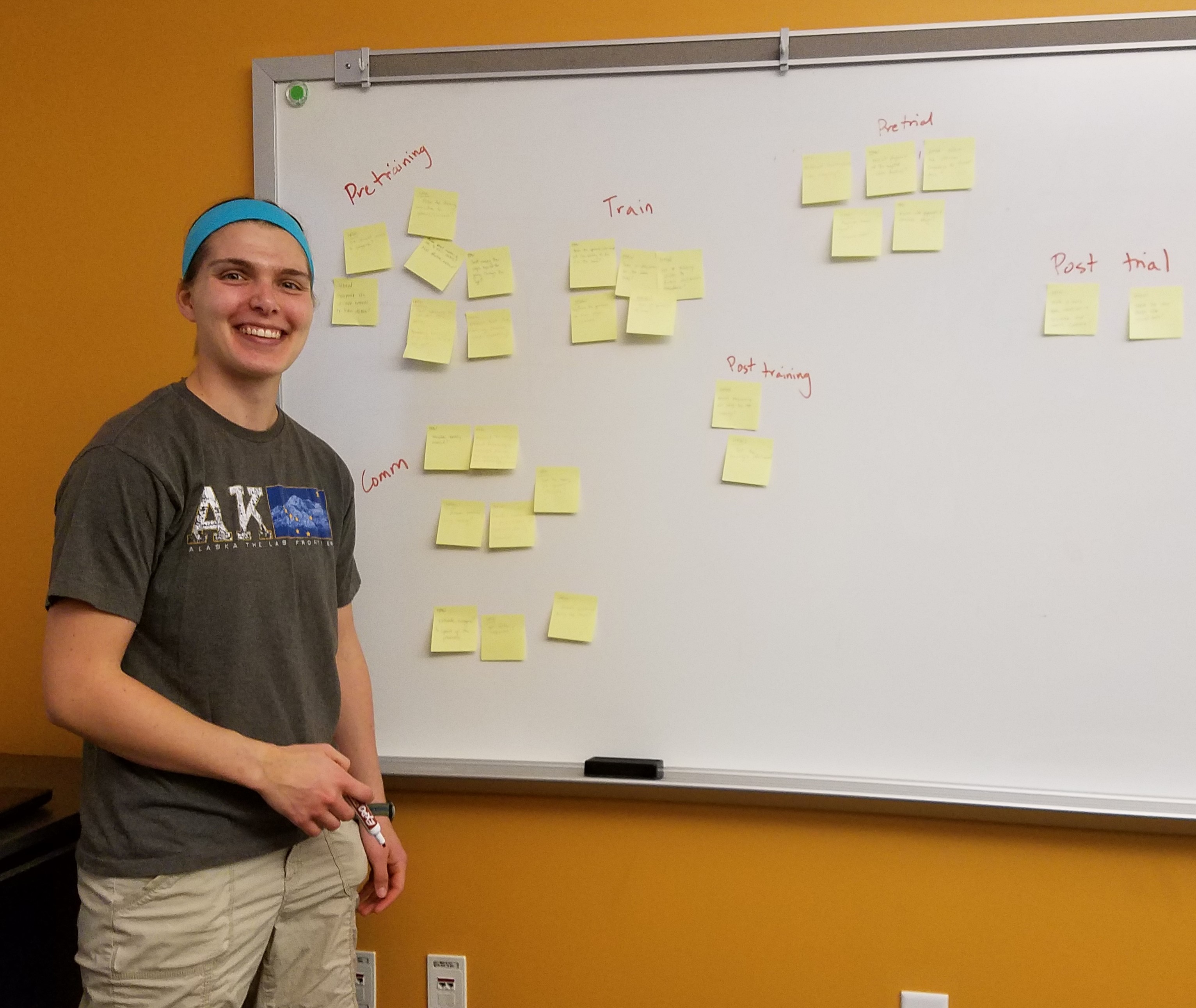Wow, another month has flown by in GMI! Lately, I’ve been spending most of time juggling sprints, Consultika, classes, and our food allergy project. I feel like I’m making progress on my various projects in leaps and bounds (and sometimes fits and starts). Inevitably, one project seems to dominate my time for a few days and has a breakthrough then stalls and I pick up where I left off on another project. I actually really enjoy this setup because it keeps me from getting bogged down waiting on one project; it also keeps me engaged as I’m constantly switching gears. There’s never a dull moment!
A couple weeks ago, I led my very first sprint on Consultika. Before the kickoff, I prepared by creating a project map, which is basically a plan detailing the current project status, people involved, the project’s longer-term goals, and how to achieve those goals. For Consultika, the map mostly consisted of the paperwork pathways to IRB approval to start our clinical trial before I graduate. (On a side note, I recently submitted the application for Rice IRB approval which was a big milestone). There was one spot in my map that was perfect for a sprint: training clinicians to use the app. So on Day 1 of the sprint, Siri, Abby, and Tasha helped me brainstorm key questions that we would try to answer during our sprint. Then I organized these questions on the white board (see pic below) and we voted on which were the most important to tackle for the week. We ended up choosing to brainstorm and prototype three different ways to train the clinicians and then try to predict potential pitfalls in these methods. So on Day 2, we met for an hour to brainstorm. Our top three training methods were: video tutorials, an in-app pre-use tutorial, and an in-app interactive walk-through. Each of my teammates spent the rest of the week prototyping one of these ideas while I racked my brain to devise a way to ensure the efficacy of the training. Then, on Day 6 (we took a few days off for Rice’s spring recess), we debriefed and presented our solutions to the group. I was quite impressed with the work that we accomplished in such a short time. Siri, Abby, and Tasha came up with ideas that would have never crossed my mind; I’m really grateful for their help on Consultika.
After my sprint, I decided not to pursue the in-app options for training. The main reason was that I felt they were unnecessary at this point. I created enough of the in-app walkthrough for proof of concept, but I believe it’s something that should wait until the final version of the app because we will undoubtedly make some changes to the app after the clinical trial. In choosing a training method, I have to make it adaptable for users with little and lots of experience using apps (if they’re like me, they’ll probably just want to play with the app to learn it on their own without instructions). I must also balance the resources used to create the training with its effect on the clinical trial, which may be minimal. With this in mind, I decided to pursue a series of short video tutorials to train the clinicians. And to make it adaptable for various users, I decided to implement a “test case.” This test case is virtually identical to the real app, but the clinicians enter in their own data instead of patient data. Thus, the users can decide for themselves if they need to complete the app training or not and yet they still have to complete a test case to ensure that they can correctly use the app.
For our other recent sprints, we have been working on DialOasis. Specifically, I have been helping Abby and Siri to create the DialOasis sink. For the first sprint, we built several prototypes of the sink; each one was progressively more complex (see photo below). First, Abby and I built a simple wooden frame to surround the buckets that comprise the functional part of the sink. Then, we covered three sides with wood panels then tarp and added a sink basin. Finally, we added a tarp flap to the front of the sink so that it is more aesthetically pleasing, but the buckets can still be easily emptied and refilled. I love to prototype because I always learn so many practical things about the design: for example, a flap that opens upward is more convenient than one that opens sideways like a door, velcro doesn’t stick to wood, and 17 inches wide is an inch too wide for the frame. So with these lessons in mind, we transitioned into our next DialOasis sprint two weeks later. In this sprint, I made a SolidWorks (3D computer) model of our updated design for the sink. Both of these sprints happily gave me a break from the computer side of my life (Consultika) and put me back in touch with my mechanical side. I think I was grinning a lot during these sprints as I got to build things with my own hands, and I’m very proud of what we accomplished as a team.
As always, there’s time for fun with GMI. Some of the materials and gadgets for Tasha’s stent project came in and it felt like Christmas all over again. This was amplified by the fact the our NIMA device arrived the same day for our allergy project. NIMA is a small device that can detect traces of gluten in a capsule of food; we have yet to try it, but I’ll keep you updated. Also, I went to a Lunar New Year celebration with some friends and almost got eaten by a lion. I’m taking advantage of Houston’s diverse culture to experience as many festivals and celebrations as I can.






